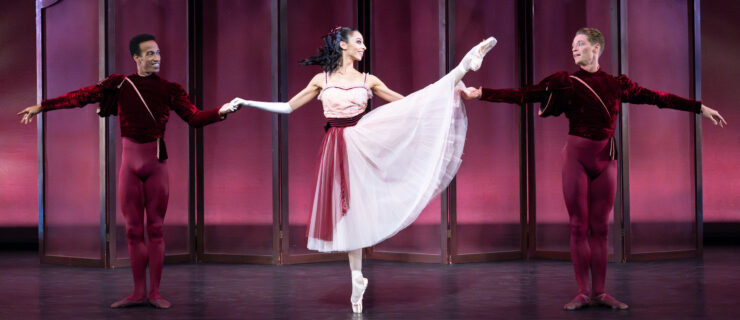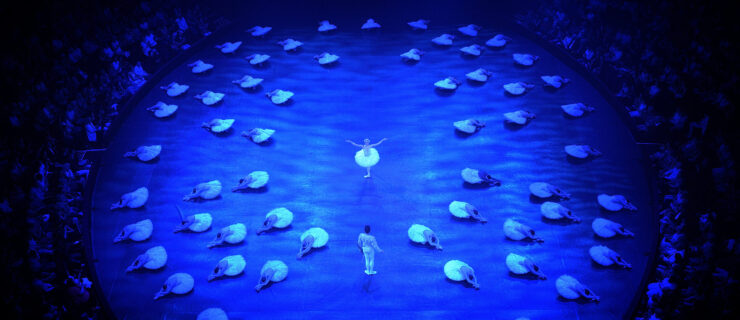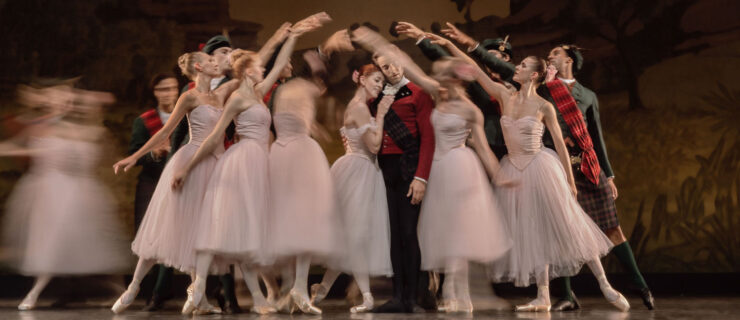Director's Notes: The Revitalizer
Emily Molnar has given Ballet BC fresh life.
W
atching the exuberant dancing of today’s Ballet BC, you’d hardly guess that the troupe was on the brink of collapse a little more than four years ago. In 2008, dwindling audiences had compounded the company’s financial difficulties. Forced to lay off staff and dancers, that December, Ballet BC filed for bankruptcy protection. It looked like the final curtain.
Today, buoyed by critical acclaim, returning audiences and an improving balance sheet, the Vancouver-based Ballet BC has risen from the ashes under artistic director Emily Molnar. This season saw a bold and successful reimagining of Giselle by Montréal choreographer José Navas. The troupe toured Canada and the U.S. with works by William Forsythe, Jorma Elo, Medhi Walerski and Molnar herself. This July, the company returns to Jacob’s Pillow Dance Festival.
Although Molnar, 39, is the first to emphasize that the turnaround has been a team effort, it’s generally agreed that the former Ballet BC star who came back as artistic director has been central to the company’s revival. Molnar’s calm, encouraging yet demanding approach has given the dancers a renewed sense of purpose. “It’s important to me that there’s an intention,” she says. “There’s a reason why we’re doing this, there’s something we have to say as artists.”
Ballet BC was founded in 1986 out of the failed Pacific Ballet Theatre. During the first six years, directors came and went, making Ballet BC’s identity hard to pin down. A promising period unfolded with the 1992 arrival of artistic director John Alleyne. He gave the company a sleek, neoclassical look; but audiences wavered as the company explored a broader programming approach. There was a sense that Ballet BC had lost its way artistically.
Molnar replaced Alleyne in 2009. She’d begun her career with The National Ballet of Canada, then joined Forsythe’s Frankfurt-based company in 1994. It proved the perfect place for a dancer of Molnar’s considerable height (5’ 11”) and powerfully distinctive way of moving. But four years later, she was lured back to her homeland by Alleyne. She remained with Ballet BC until 2002, when she became a freelance choreographer, working in a contemporary style that’s rooted in ballet yet distinctive in its visceral power and dynamic variety.
Upon taking over Ballet BC, Molnar quickly infused the troupe with fresh confidence. “I spent a lot of time getting the dancers to take ownership of the work,” she recalls. Molnar says she wants dancers to be curious about the artistic process and eager to participate as creative collaborators.
Molnar has also been reaching out to the community, rebuilding bridges that neglect had allowed to crumble. That includes spreading the word about Ballet BC by speaking to local groups. “There’s a lot more engagement. People feel more welcome now,” she says.
She defines Ballet BC broadly as “a contemporary ballet company,” but more in the European than American sense of that definition. “Everything we do requires a classically trained dancer, but does not always have a codified use of the classical idiom. Our work today focuses on new movement invention.”
It’s an approach that embraces a wide range of possibilities. She’s hired a number of Canadian choreographers, such as Crystal Pite and Wen Wei Wang, as well as American-born former Ballet BC member Donald Sales.
“I like to bring in artists who stimulate the dancers,” she explains. “My biggest responsibility is to cultivate potential, to provide a productive environment where the dancers can grow. I want us to take the art forward, and make sure dance remains a valid art that’s going to last.”
At A Glance
Ballet BC
Location: Vancouver, British Columbia, Canada
Size: 14, plus 3 apprentices
Starting salary: From $540/week
Length of contract: 36–40 weeks or more, depending on touring
Performances: 20-plus
Website: balletbc.com
Audition Advice
“When you audition, it’s important to know about yourself, about what people are going to see first, so that you know how to present yourself and show what it is about you that’s special,” says Molnar. “I often recommend that dancers avoid cattle calls because it’s very hard to be seen as an individual.” Apart from having auditioning dancers take class, Molnar likes to work with them individually or have them work in the back during a rehearsal to see how they pick up information. “Openness and work ethic are huge for me,” she says, citing the need for her dancers to be fully engaged in the creative process. “It’s not just about learning steps.”





